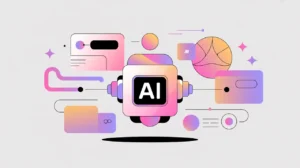Importance of Total Cost of Ownership for AI Systems
Total Cost of Ownership (TCO) for AI Systems refers to the full range of costs an organization incurs over the lifetime of an AI solution. It goes beyond upfront expenses to include implementation, maintenance, training, governance, and eventual retirement. Its importance today lies in the fact that AI adoption often looks inexpensive at the start but becomes costly if hidden expenses are overlooked.
For social innovation and international development, TCO matters because mission-driven organizations typically operate with tight budgets. Understanding the true costs of AI systems ensures resources are allocated wisely and communities are not harmed by underfunded or unsustainable deployments.
Definition and Key Features
TCO frameworks consider direct costs (infrastructure, licensing, staffing) and indirect costs (training, integration, security, compliance). They also include opportunity costs, such as the resources foregone by choosing one system over another. Lifecycle thinking that covers design, pilot, scale, monitoring, and sunsetting, is essential for accurate TCO assessment.
It is not the same as price comparison, which only weighs upfront costs. Nor is it equivalent to cost-benefit analysis, which balances expenses with projected impact. TCO focuses on capturing the comprehensive, long-term financial footprint of AI systems.
How this Works in Practice
In practice, calculating TCO for an AI health system might include costs for cloud computing, clinician training, ongoing model retraining, cybersecurity, and regulatory compliance. An education platform may require integration with existing school IT systems, user support, and accessibility adaptations. Humanitarian agencies adopting AI for logistics must factor in redundancy planning and long-term vendor commitments.
Challenges include underestimating hidden costs such as staff turnover, retraining needs, or compliance with evolving regulations. TCO assessments also require collaboration between technical, financial, and program teams, which is not always routine in mission-driven organizations.
Implications for Social Innovators
TCO assessments are vital across mission-driven sectors. Health initiatives can avoid failed diagnostic platforms by budgeting for long-term updates and monitoring. Education programs can ensure adaptive learning tools remain sustainable by including teacher training and support in cost models. Humanitarian agencies can prevent disruptions in aid delivery by planning for redundancy and maintenance costs. Civil society groups often advocate for transparent TCO assessments so funders and communities understand the long-term commitments behind AI adoption.
By applying TCO analysis, organizations ensure AI systems are not only affordable to start but also sustainable, resilient, and mission-aligned over time.







